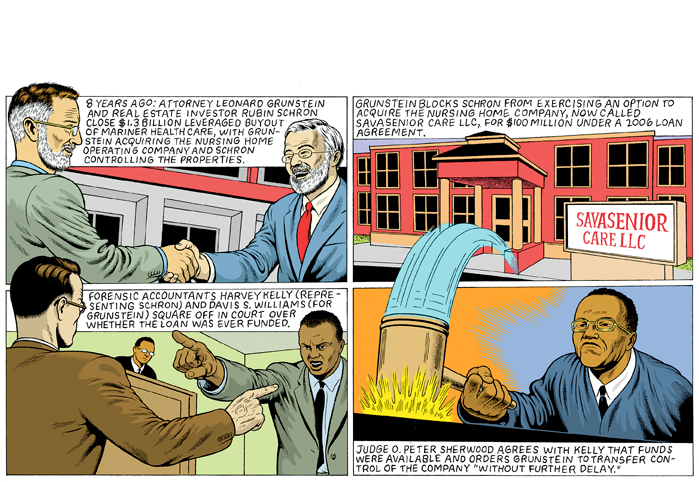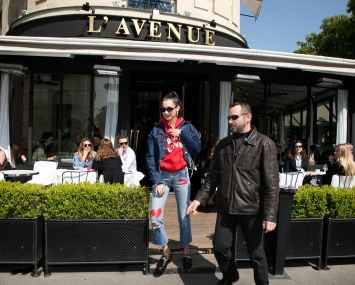Accountants Stars of Show During Blockbuster SavaSeniorCare Trial
By Jotham Sederstrom October 9, 2012 7:00 am
reprintsTwo top forensic accountants squared off in a Manhattan courtroom this summer, armed with scores of spreadsheets, loan documents and bank wire records, for a decisive battle in a legal war for control of about 170 nursing homes.
The trial in New York Supreme Court had its origins eight years ago, when real estate investor Ruby Schron teamed up with his lawyer, Leonard Grunstein, in a labyrinthine $1.3 billion leveraged buyout that created SavaSeniorCare. At issue for the two expert witnesses: the exact whereabouts of $100 million.
 On Mr. Schron’s side was Harvey R. Kelly, whose 30-year career as an auditor and forensic accountant included investigations into the WorldCom and Health South scandals. Mr. Kelly is managing director and head of corporate investigations practice at AlixPartners, the firm that acted as claims agent and consultant to the trustee overseeing the liquidation of Bernard L. Madoff’s securities firm.
On Mr. Schron’s side was Harvey R. Kelly, whose 30-year career as an auditor and forensic accountant included investigations into the WorldCom and Health South scandals. Mr. Kelly is managing director and head of corporate investigations practice at AlixPartners, the firm that acted as claims agent and consultant to the trustee overseeing the liquidation of Bernard L. Madoff’s securities firm.
Providing expert testimony for Mr. Grunstein was David S. Williams, the chief executive officer of Deloitte Financial Advisory Services LLP. A veteran of the firm’s Forensic & Dispute Services unit, Mr. Williams has also been the national leader of the firm’s valuation services practice. Since 2004, he has been a member of the executive committee of Deloitte FAS and of the board of the parent company, Deloitte LLP. AlixPartners and Deloitte said the firms’ policies prevent the accountants from commenting.
The case, which hinged on how much money from a $100 million loan by Mr. Schron actually found its way to Mr. Grunstein and his companies, is representative of the assignments that have driven growth in forensic accounting practices as New York real estate values plunged and more owners went to court to protect their shrinking equity. The accountants in Schron v. Grunstein were more than $110 million apart in their estimates of how much money was lent.
“Whether a loan is funded is a typical issue” said Joseph Nelson, a partner at Berdon LLP, who estimated the New York-based firm’s forensic practice has been growing at a 100 percent annual clip for several years. The answer, he said, can determine whether money invested in a property was a capital contribution or a loan and thereby establish how much of an asset each investor owns. In the nursing home case, the accounting helped determine that Mr. Schron could acquire the company without any further investment by simply assuming the debt.
Mr. Schron, head of Cammeby’s International, is a significant—and notoriously secretive—player in the real estate market. According to published accounts, he owns and manages more than 25,000 residential units and 10 million square feet of commercial and industrial space, including a stake in the Woolworth Building. Prior to the nursing home deal, Mr. Grunstein had represented Mr. Schron in “dozens of matters” as his primary legal counsel, according to court testimony cited in Justice O. Peter Sherwood’s Sept. 6 decision.
In 2004, Mr. Grunstein and investment banker Murray Forman approached Mr. Schron with a proposal to buy Mariner Health Care Inc., a public company that operated more than 250 nursing homes and owned real estate associated with about 170 of them.
“Schron was interested in owning the real estate, not operating nursing homes,” the judge wrote. “Grunstein and Forman proposed a complex transaction employing a ‘PropCo/OpCo’ structure whereby Old Mariner’s real estate would be separated from the nursing home operations.”


